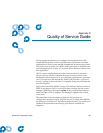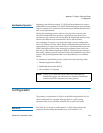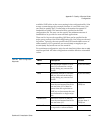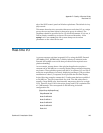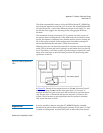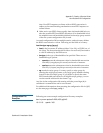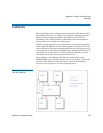
Appendix D Quality of Service Guide
Real-time I/O
StorNext 3.5 Installation Guide 149
tab of the SNFS control panel on Windows platforms. The default is sixty
(60) seconds.
This means that after sixty seconds without non-real-time I/O on a stripe
group, the non-real-time token for that stripe group is released. The
parameter should be specified in five (5) second increments. If it is not, it
will be silently rounded up to the next five-second boundary. If the
syslog level is set to debug, the file system dumps out its mount
parameters so the value can be seen.
Real-time I/O
A process requests real-time (ungated) I/O by using the SNFS External
API
SetRtio call (F_SETRIO ioctl). A library function is included in the
External API sample source code that provides all the required cross-
platform handling.
As an example, assume that a video playback application requires a
constant rate of 186 MB/sec to correctly display images without dropping
any frames. The application gates itself; that is, it requests I/O at a rate to
satisfy the requirements of correctly displaying an image. QOS provides a
mechanism so other I/O requests do not perturb the real-time display.
In the following example, assume the I/O subsystem has been qualified
at 216 MB/sec. The file system block size is 4k. The disk subsystem is
actually a large RAID array that internally maps many drives to a single
LUN. There are four LUNs in the stripe group; each LUN is optimized for
a 1.5 MB transfer. This corresponds to the following in the fsm
configuration file:
[StripeGroup MyStripeGroup]
StripeBreadth 384
Node CvfsDisk0 0
Node CvfsDisk1 1
Node CvfsDisk2 2
Node CvfsDisk3 3
Rtmb 216




